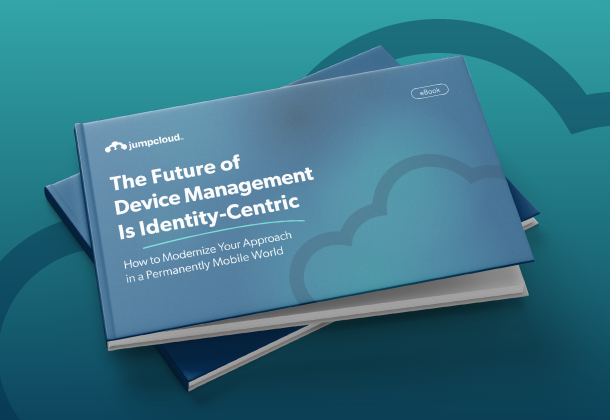The modern workplace is very different from traditional offices.
Employees are no longer tied to desks or company-issued devices. They work from coffee shops, home offices, and airport lounges. They use the devices you give them (and their own) to access cloud applications and get their work done.
This shift creates challenges for IT teams that secure and manage a wide range of devices.
Traditional device management focuses on individual devices and their settings. This method struggles to keep pace. It lacks the flexibility needed to secure a workforce that demands access anytime, anywhere, on any device.
Identity-Centric Device Management: A Smarter Approach
Enter identity-centric device management (IDM). This modern approach shifts the focus from devices to user identities. Through this lens, it’s easy to see that a device is simply an extension of the user themselves. And it ought to be managed as such.
This new perspective offers several benefits:
- Enhanced security: Tying device access to user identities allows for detailed access controls. Even if an employee’s device is compromised, an attacker needs their credentials to access sensitive data. For example, if an employee loses their laptop, IDM can revoke their access remotely, protecting company data.
- Improved user experience: IDM simplifies access with single sign-on (SSO) capabilities. Employees can use one set of credentials for all work applications. This boosts productivity and reduces password fatigue.
- Simplified IT management: IDM lets IT teams manage users and devices from a central platform. This reduces complexity and improves efficiency. IT can focus on managing user identities and access, making processes smoother.
- Greater flexibility and scalability: IDM adapts to the needs of modern workforces. It supports remote work and bring-your-own-device (BYOD) policies. Organizations can grow without being limited by traditional management methods. IDM works with Windows laptops, Macs, iPhones, and Android tablets.
Identity-Centric Device Management Delivers Intelligent Security
Integrating identities and devices adds context for better security. Here’s how IDM helps you control your security:
- Comprehensive software management: Install, manage, and update software across all devices. Automate deployments to save IT time.
- Visibility into SaaS application usage: Monitor and manage SaaS applications to reduce unauthorized access risks.
- Enhanced authentication: Register trusted devices for added protection. Even if an attacker has a password, they cannot access an account without the physical device.
- Proactive patch management: Ensure devices are up to date to minimize vulnerabilities against cyber threats.
- Granular access control: Assign elevated permissions only when necessary. This reduces the risk of unauthorized access.
- Privacy protection: Manage user privacy and comply with data regulations like GDPR and CCPA.
- Uniform policies across diverse devices: Apply the same security standards across all device types, simplifying management.
- Streamlined compliance: Easily track access permissions and prove compliance during audits.
- Balanced security and usability: Enable employees to work efficiently and securely from any device.
Identity-Centric Device Management Empowers Users and IT Alike
Identity-centric device management helps IT create a flexible and secure environment. By using IDM, you can:
- Build a reliable security program for all device types
- Improve user experience to match employee expectations
- Reduce shadow IT by sanctioning expected devices
- Manage devices without complicated policies
- Support company growth without outdated restrictions
- Easily access compliance data when needed
Ready to Talk Solutions?
Your current device management may struggle to meet your needs. A device-centric model can hinder your ability to achieve an identity-centric approach.
If you continue with this model, you’ll face ongoing problems that can worsen as mobile-friendly work expectations grow.
Yet, changing your approach may seem overwhelming. Finding the right solution can feel like looking for a “bigger boat” in a complex sea.
Fortunately, identity-centric solutions make this transition easier. These solutions help IT meet diverse user needs without compromising security or team efficiency.
Learn how to find the right identity-centric device management solution in our free guide.





